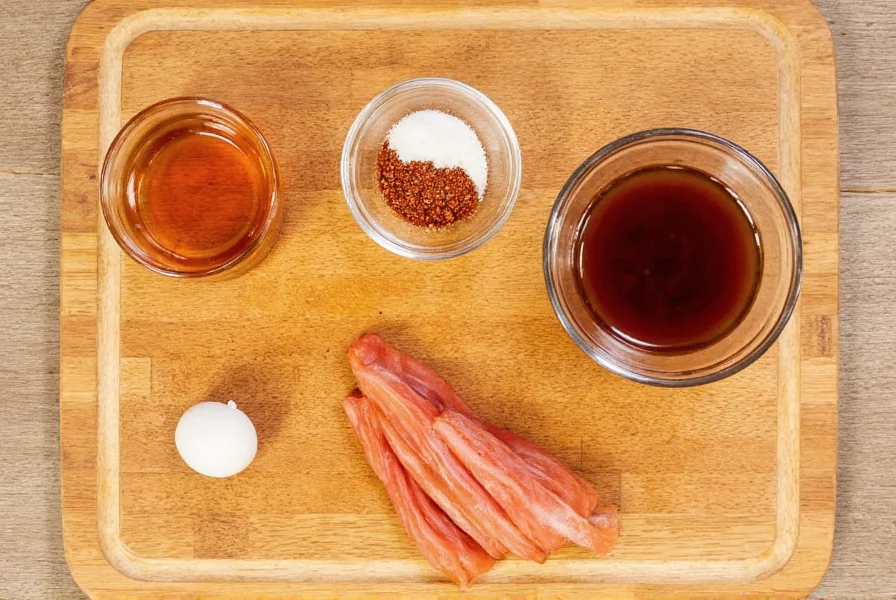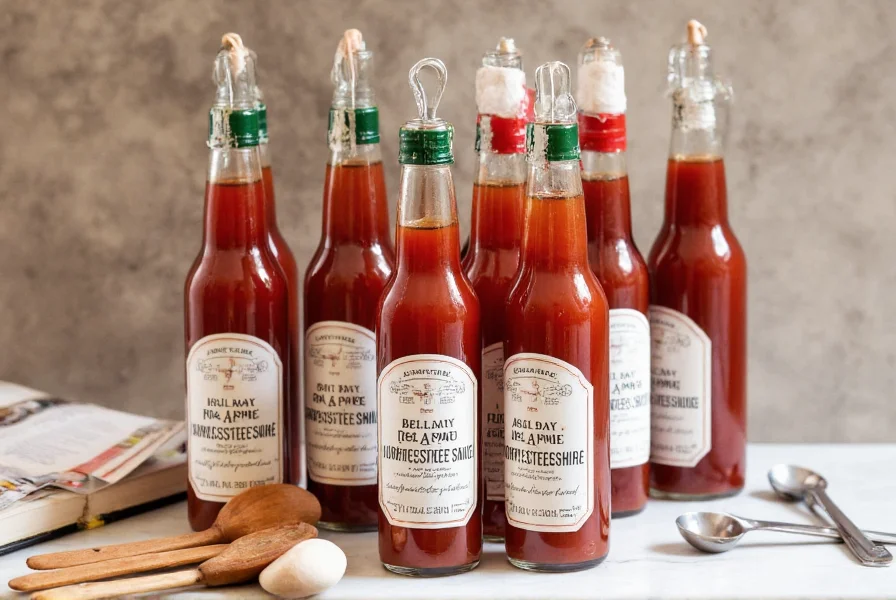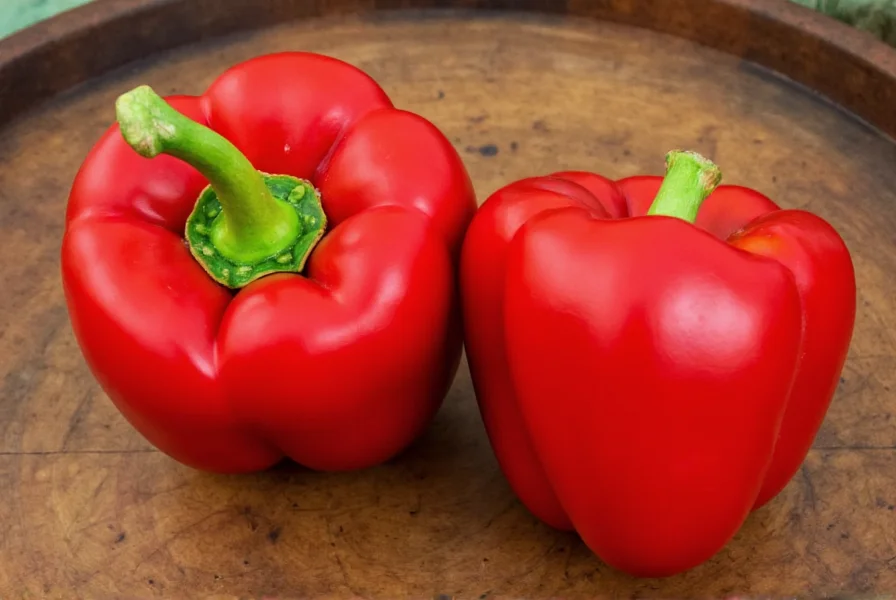Many home cooks and professional chefs seek out this flavorful condiment to elevate their recipes without overwhelming other ingredients. Unlike regular Worcestershire sauce, the red pepper variety delivers an extra dimension of heat that complements rather than dominates the dish.
Understanding Worcestershire Sauce Basics
Before exploring the red pepper variation, it's essential to understand traditional Worcestershire sauce. This fermented condiment originated in Worcester, England, during the 19th century. The classic recipe combines vinegar, molasses, anchovies, tamarind, onions, garlic, and various spices that undergo an extended aging process.
The distinctive umami-rich flavor comes from the enzymatic breakdown of ingredients during fermentation, typically lasting 18-24 months. This complex process creates the deep, savory notes that make Worcestershire sauce such a valuable kitchen staple for enhancing soups, stews, meats, and cocktails like the Bloody Mary.
What Makes Red Pepper Worcestershire Unique
The red pepper variation introduces carefully calibrated heat to the traditional formula. Manufacturers typically incorporate either:
- Red pepper flakes for subtle, textured heat
- Cayenne pepper for consistent, direct spiciness
- Infused red chili peppers for complex flavor notes
- Smoked paprika for depth with mild heat
The best red pepper Worcestershire sauces maintain the delicate balance between heat and the original sauce's complex flavor profile. Rather than creating a hot sauce substitute, these products enhance dishes with just enough warmth to complement other ingredients without overpowering them.
| Characteristic | Traditional Worcestershire | Red Pepper Worcestershire |
|---|---|---|
| Primary Flavor Profile | Umami, tangy, savory | Umami with noticeable heat |
| Heat Level | Mild (0 on Scoville scale) | Mild to medium (500-5,000 Scoville) |
| Best Culinary Uses | General seasoning, cocktails | Spicy marinades, bold dressings |
| Key Differentiator | Classic fermented flavor | Added red pepper complexity |
Culinary Applications for Red Pepper Worcestershire
This versatile sauce shines in applications where you want to add both depth and heat without reaching for separate condiments. Consider these creative uses:
Meat Preparation
Create exceptional marinades for steak, chicken, or pork by combining red pepper Worcestershire with olive oil, garlic, and herbs. The enzymatic properties help tenderize meat while the heat penetrates deeper than surface-level spice rubs.
Vegetarian and Vegan Cooking
For plant-based dishes lacking natural umami, this sauce provides both savory depth and gentle heat. Add to lentil stews, mushroom gravies, or roasted vegetable glazes for enhanced complexity without overwhelming spice.
Cocktail Enhancement
Elevate your Bloody Mary beyond the standard recipe by substituting regular Worcestershire with the red pepper variety. The additional heat complements tomato juice while creating a more complex flavor profile that stands up to premium vodkas.

Creating Your Own Red Pepper Worcestershire
When commercial options don't meet your specific heat preferences, making your own allows complete customization. This simplified recipe yields a flavorful homemade version:
- Combine 1 cup distilled vinegar, ¼ cup molasses, 2 tablespoons soy sauce, and 1 tablespoon red pepper flakes in a saucepan
- Add 1 minced garlic clove, ½ teaspoon onion powder, and a pinch of ground cloves
- Simmer gently for 20 minutes (do not boil vigorously)
- Cool completely, then strain through cheesecloth
- Store in airtight container in refrigerator for up to 3 months
Adjust the red pepper flakes to control heat level—start with 1 tablespoon for mild heat and increase to 2 tablespoons for medium heat. For authentic depth, consider adding a small piece of tamarind paste (about ½ teaspoon).
Selecting Quality Commercial Products
When purchasing store-bought red pepper Worcestershire, look for these quality indicators:
- Natural fermentation process mentioned on label
- Real red pepper ingredients rather than artificial flavors
- No high-fructose corn syrup as primary sweetener
- Minimal preservatives and additives
- Transparent ingredient sourcing information
Reputable brands typically age their sauces for several months to develop complex flavors. Check for production dates rather than just expiration dates to ensure freshness, as the flavor continues to evolve during storage.

Storage and Shelf Life Considerations
Proper storage maintains both flavor and safety of your red pepper Worcestershire sauce. Unopened bottles typically remain at peak quality for 18-24 months when stored in a cool, dark place. After opening, refrigeration extends freshness significantly.
The vinegar base provides natural preservation, but the red pepper components can degrade over time. For optimal flavor, use opened bottles within 6 months. Check for any off smells, mold, or significant separation before using older bottles.
Common Questions About Red Pepper Worcestershire
Is red pepper Worcestershire sauce significantly hotter than regular Worcestershire?
No, most commercial red pepper Worcestershire sauces maintain a mild to medium heat level designed to complement rather than dominate dishes. The heat typically ranges from 500-5,000 Scoville units, which is noticeably warm but not overwhelming like dedicated hot sauces. The best varieties balance the heat with the traditional Worcestershire flavor profile.
Can I substitute red pepper Worcestershire for regular Worcestershire in recipes?
Yes, you can generally substitute red pepper Worcestershire for regular Worcestershire at a 1:1 ratio. However, consider the dish's overall flavor profile—use it when you want to add subtle heat. For dishes where heat might be undesirable (like delicate seafood or creamy sauces), stick with traditional Worcestershire. In spicy recipes, the substitution often enhances the dish's complexity.
Does red pepper Worcestershire contain actual red peppers?
Quality red pepper Worcestershire sauces typically use real red pepper ingredients such as crushed red pepper flakes, cayenne pepper, or infused red chili peppers. Check the ingredient list for specific pepper varieties rather than vague terms like 'spices' or 'natural flavors.' Authentic products specify their pepper sources and often mention the type of red pepper used in their formulation.
Is Worcestershire sauce with red pepper suitable for vegetarians?
Traditional Worcestershire sauce contains anchovies, making it unsuitable for vegetarians. Most red pepper variations follow the same base formula. However, vegetarian and vegan Worcestershire alternatives exist that substitute mushroom extract or other umami-rich ingredients for anchovies. Check labels carefully if following a vegetarian or vegan diet, as the red pepper variety doesn't automatically indicate a vegetarian formula.
How can I reduce the heat if I've added too much red pepper Worcestershire?
If your dish becomes too spicy from red pepper Worcestershire, balance the heat with dairy (like yogurt or cream), sweetness (a touch of honey or sugar), or acidity (additional vinegar or citrus juice). Adding more of the other ingredients to dilute the sauce also helps. Remember that heat perception decreases as a dish sits, so sometimes waiting 15-20 minutes before adjusting further yields better results.











 浙公网安备
33010002000092号
浙公网安备
33010002000092号 浙B2-20120091-4
浙B2-20120091-4